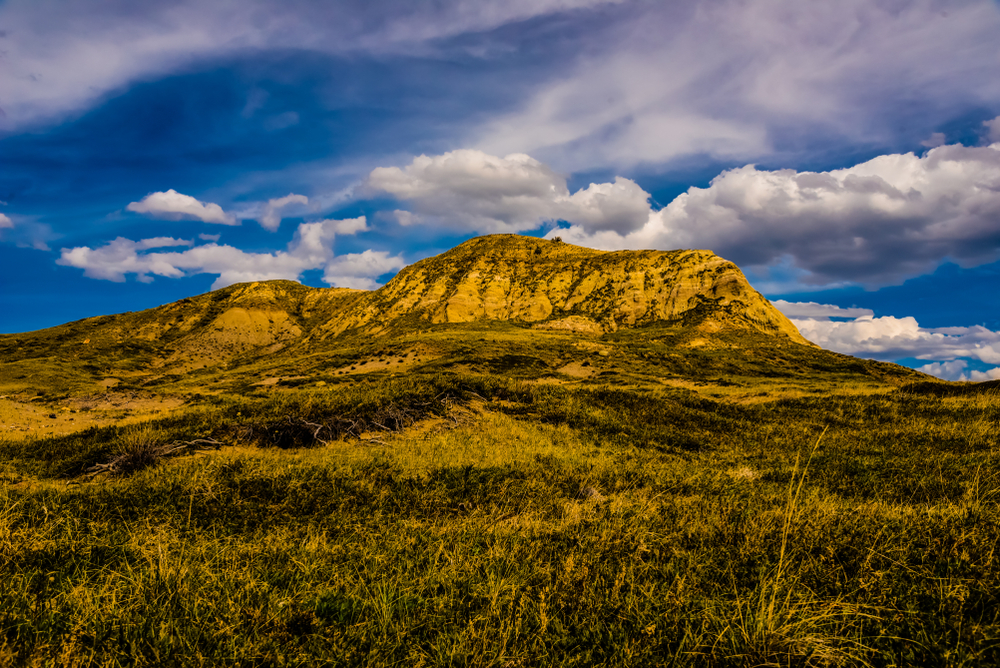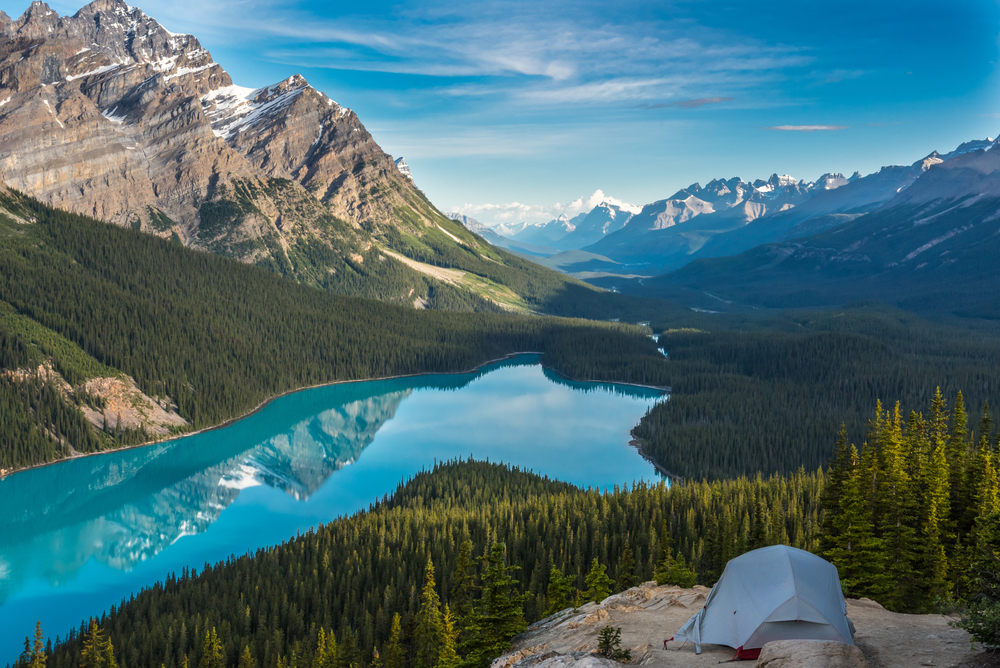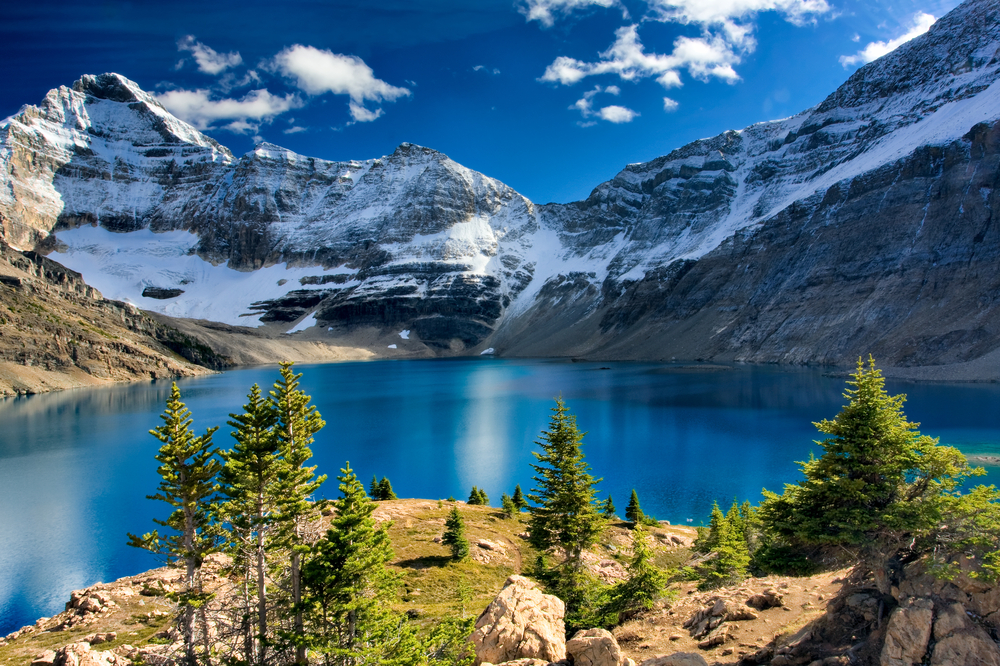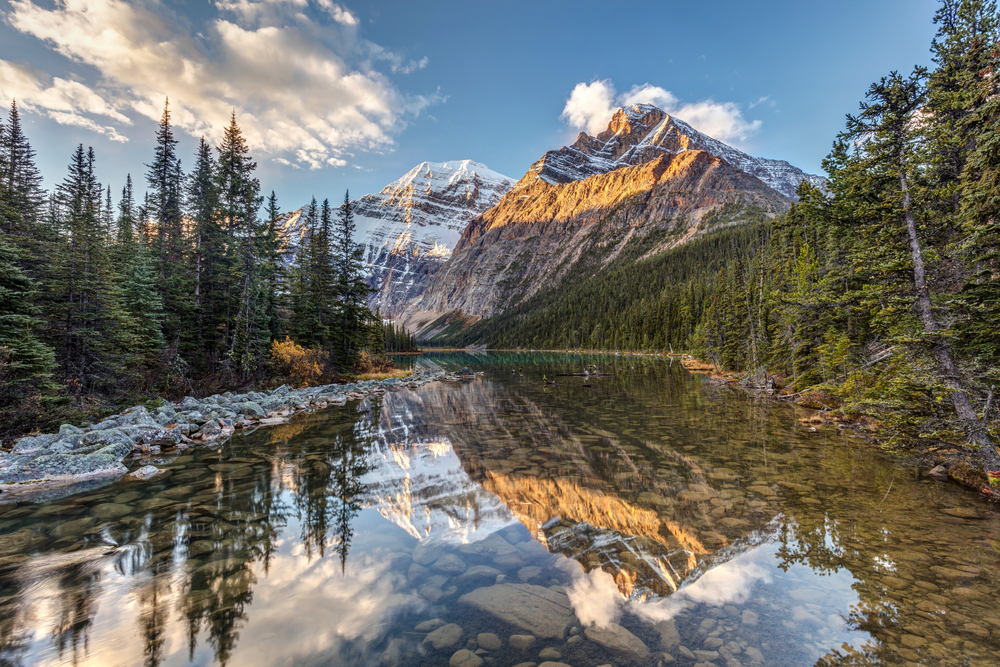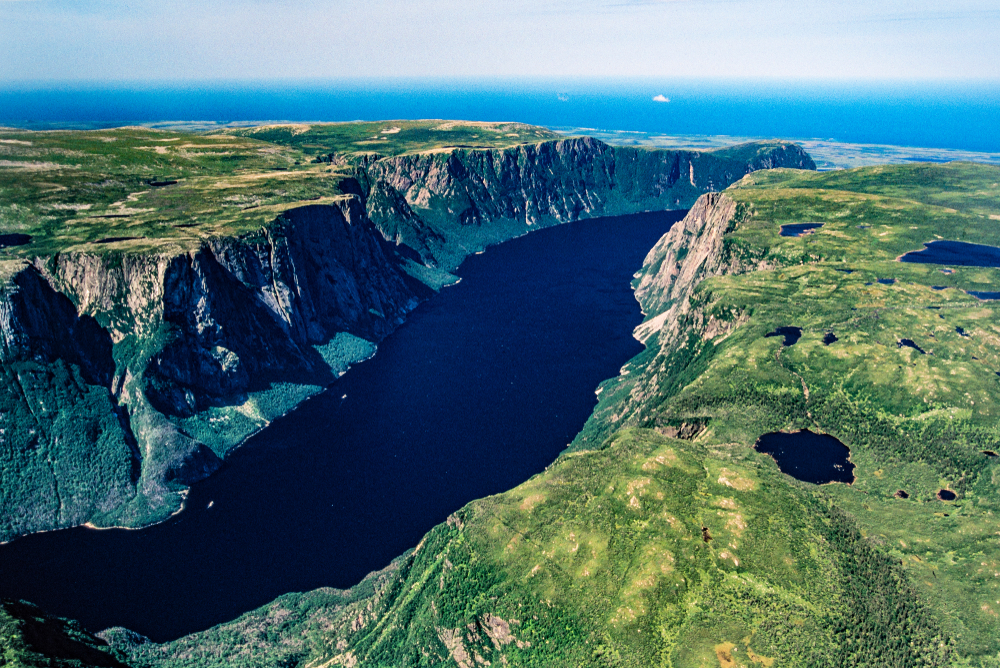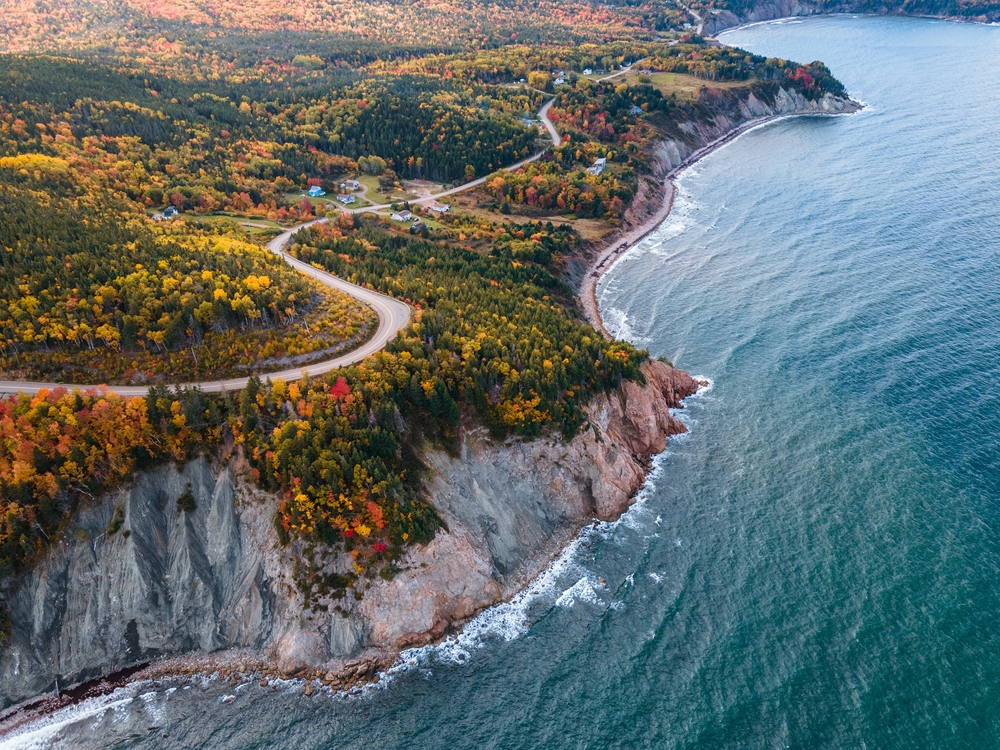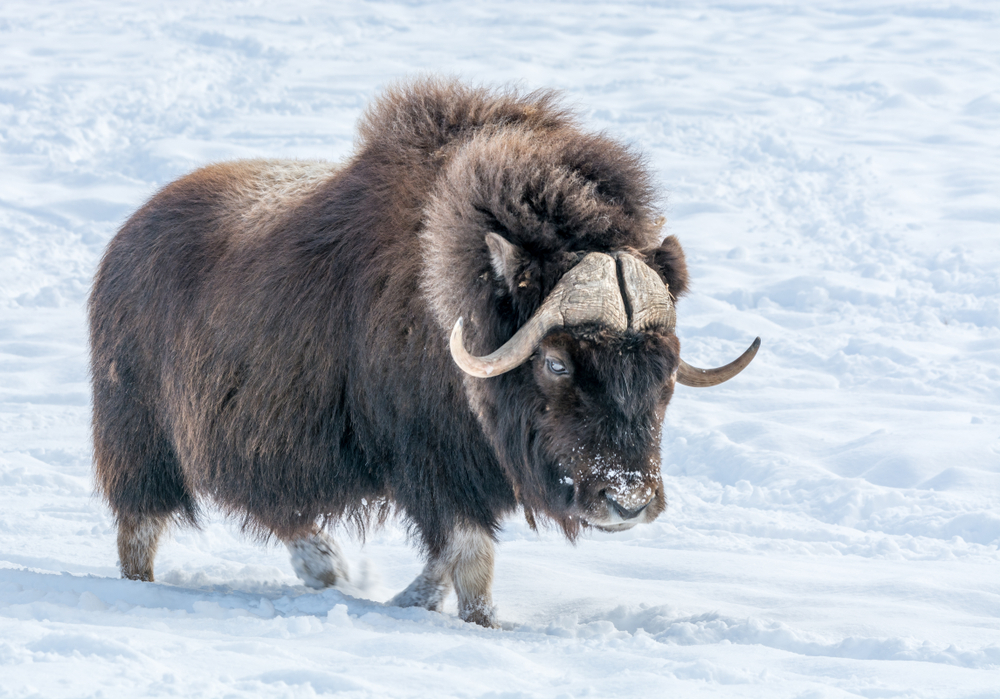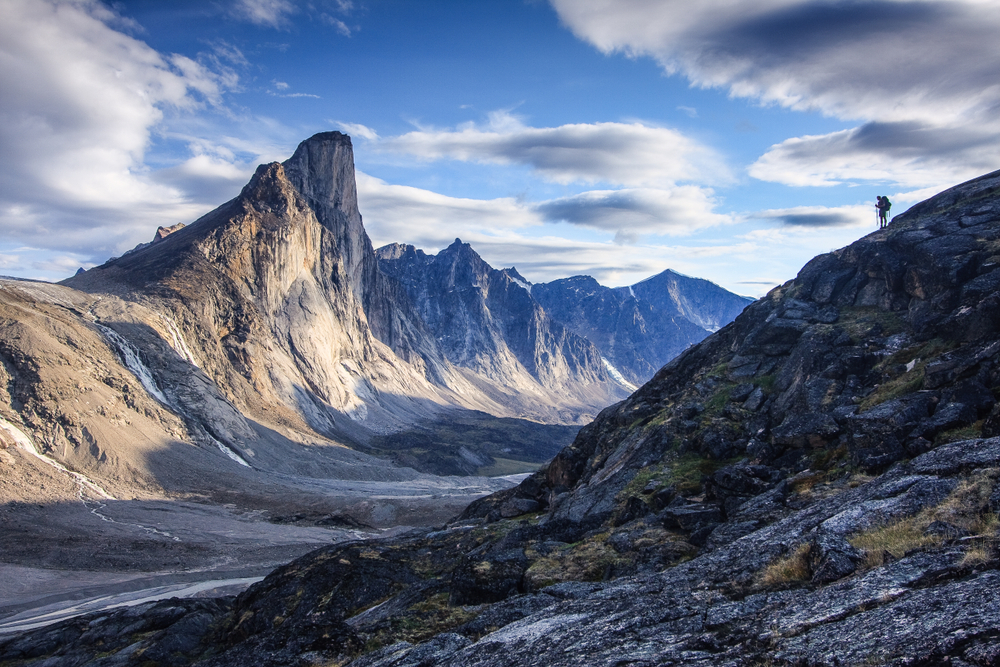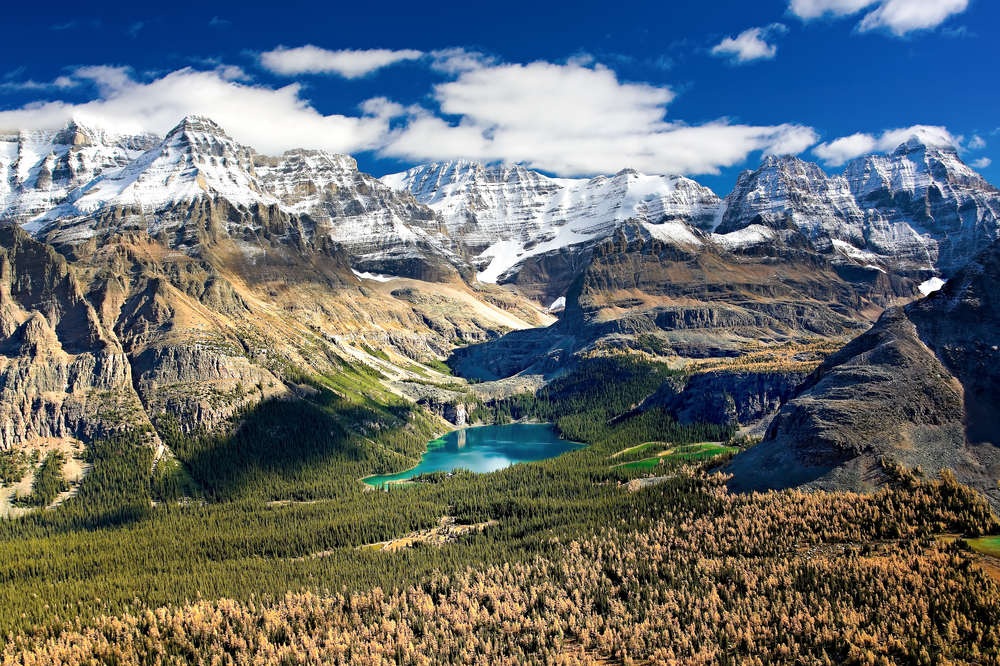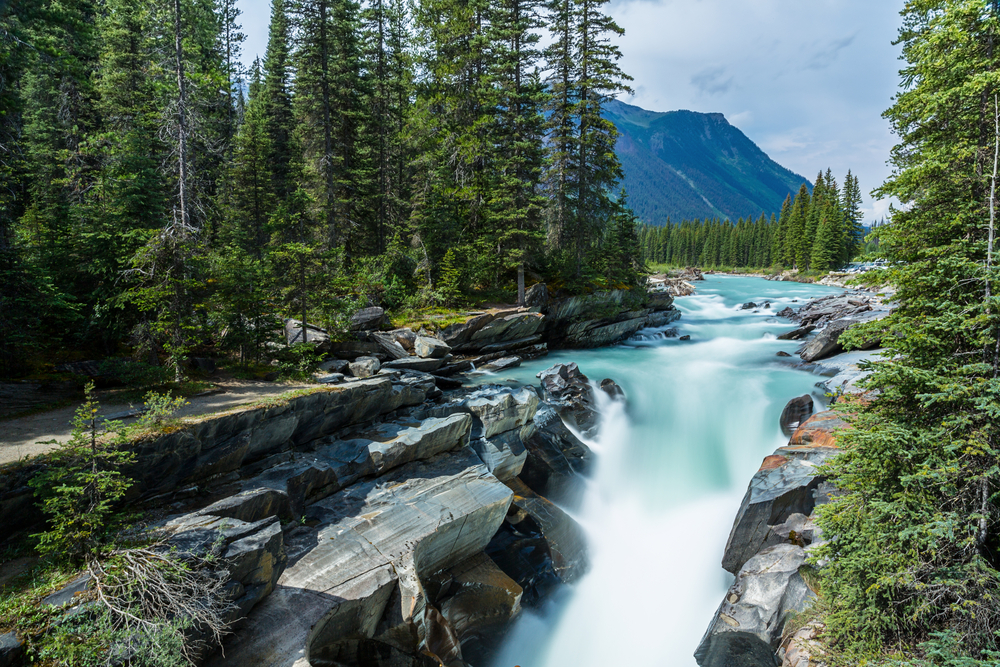Grasslands Overview
Grasslands National Park, or Parc national des Prairies in French, is located in southern Saskatchewan, Canada, near the border with Montana, USA. Covering approximately 350 square miles (907 square kilometers), the park protects one of the few remaining areas of undisturbed prairie grassland in North America.
Divided into two distinct sections, the West Block and the East Block, the park showcases rolling grasslands, coulees, badlands, and river valleys that define the dramatic prairie landscape. The West Block features the Frenchman River Valley, a striking area of mixed-grass prairie and eroded buttes, while the East Block is known for its rugged badlands, home to some of Canada’s richest fossil deposits.
The park’s landscape is a blend of mixed-grass prairie, native fescue grasses, sagebrush, and cottonwood stands along streams, offering an untouched glimpse into the vast open plains that once covered the region.
Wildlife thrives in this protected ecosystem, with the park serving as a refuge for several species at risk. Bison, once nearly extinct in the region, have been successfully reintroduced and now roam freely in the West Block. Visitors may also encounter pronghorn antelope, white-tailed deer, mule deer, and coyotes. Smaller mammals, such as black-tailed prairie dogs, inhabit the only remaining prairie dog colonies in Canada.
The park is also home to predators like swift foxes and badgers, as well as burrowing owls, which nest in abandoned prairie dog burrows. Birdwatchers will find Grasslands National Park to be a prime destination, with over 200 species recorded, including ferruginous hawks, golden eagles, and the endangered Sprague’s pipit. The park’s diverse birdlife reflects the unique and fragile balance of the prairie ecosystem.
Among the park’s most popular features are the badlands of the East Block, which reveal layers of prehistoric history, including dinosaur fossils. The Valley of 1,000 Devils is particularly well-known for its rugged, eroded formations that create an otherworldly landscape.
The Frenchman River Valley, with its sweeping vistas and meandering waterways, is another highlight, drawing visitors for its scenic beauty and abundant wildlife. The dark sky preserve designation makes Grasslands National Park one of the best places in Canada for stargazing, with minimal light pollution offering spectacular views of the Milky Way and meteor showers.
Indigenous history is deeply tied to the land, with tipi rings and other cultural artifacts providing a glimpse into the lives of the First Nations peoples who once inhabited the region.
Visitors to Grasslands National Park can experience the park through a variety of activities. Hiking and backcountry camping allow for immersive exploration, with trails such as the 70 Mile Butte Trail offering panoramic views of the prairie.
Guided tours provide insights into the park’s natural and cultural history, including fossil digs and Indigenous storytelling sessions. Wildlife viewing is a major draw, particularly for those hoping to spot bison herds or hear the calls of prairie birds. The park’s extensive network of gravel roads also makes it accessible for scenic drives and cycling, offering a chance to take in the vast, open landscape at a leisurely pace.
Conservation efforts in the park focus on preserving the fragile prairie ecosystem, which has been significantly reduced due to agriculture and development. The successful reintroduction of bison stands as one of the park’s greatest achievements, helping to restore the natural balance of the grasslands.
Efforts to protect endangered species, such as the black-tailed prairie dog and burrowing owl, highlight the ongoing work to maintain biodiversity. Managing invasive species and mitigating human impact remain ongoing challenges, but partnerships with Indigenous groups and conservation organizations have strengthened stewardship initiatives.
Through careful management and education, Grasslands National Park continues to be a sanctuary for one of Canada’s most endangered ecosystems.








































































